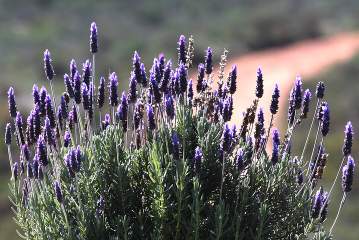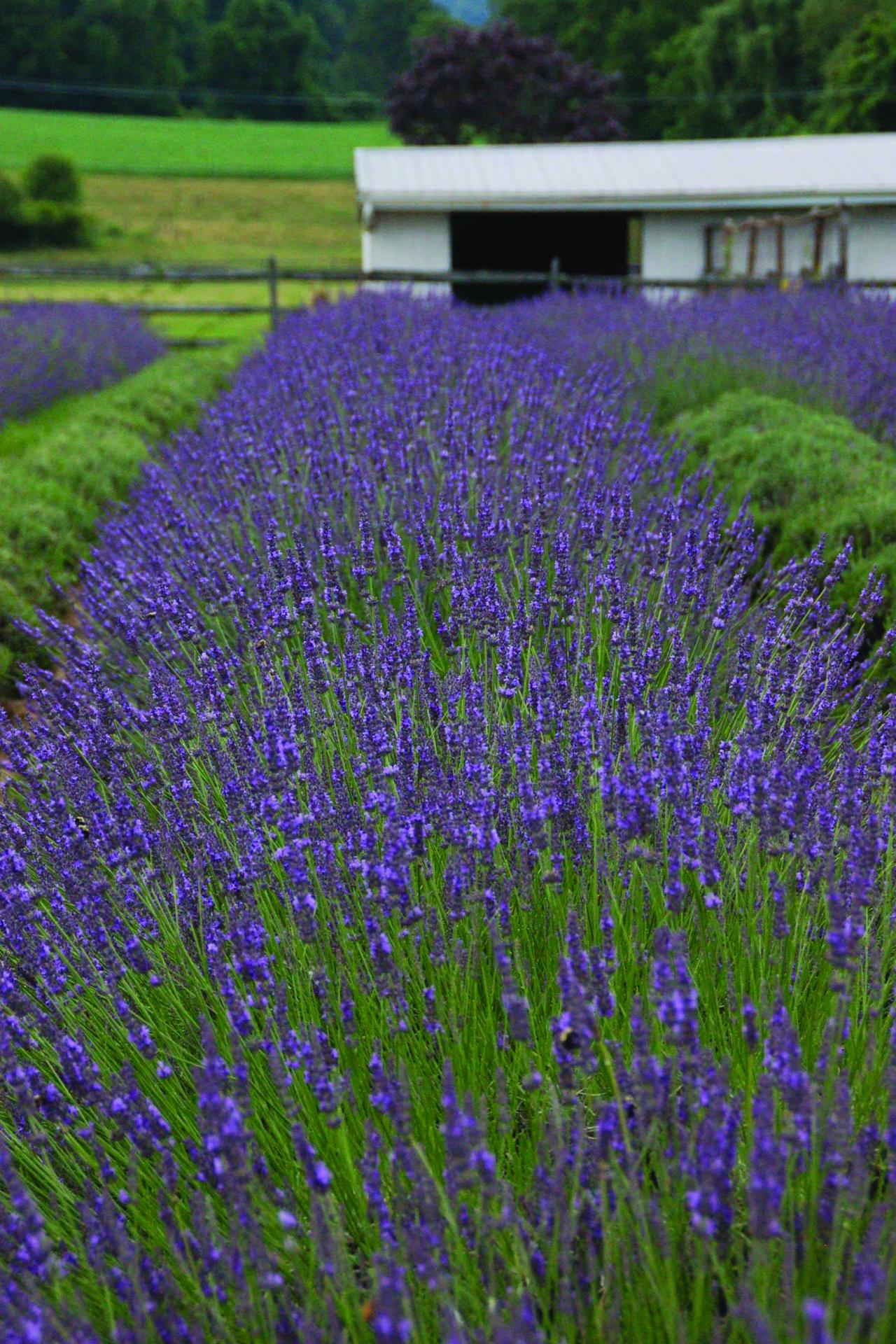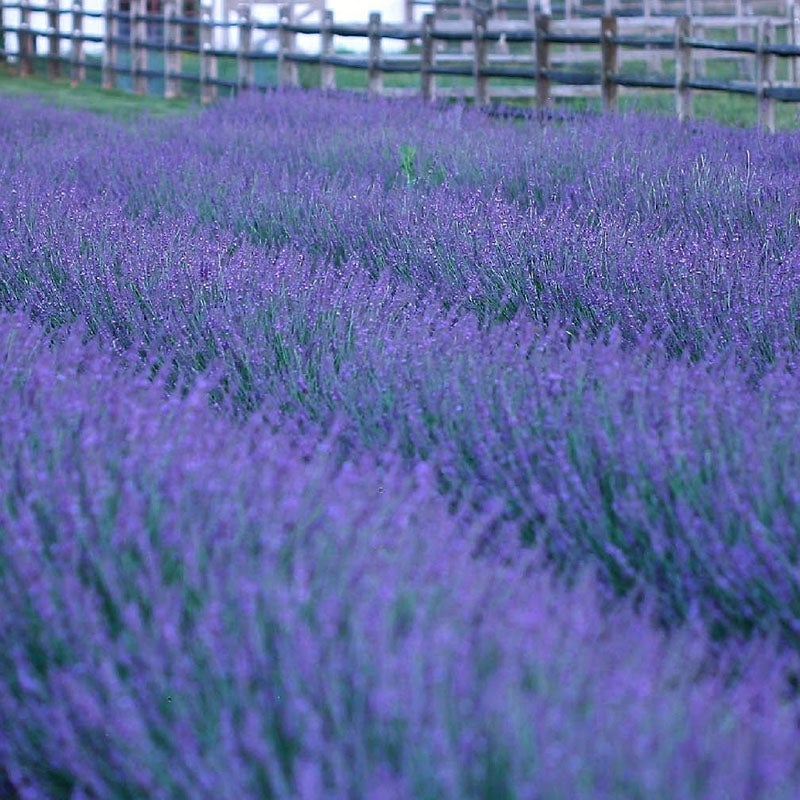
Lavenders should be spaced 2-3 feet away from other plants and one another. It’s crucial that lavenders have a minimum of 2-3 feet of space between them in order to avoid competition for resources like sunshine, water, and nutrients. The amount of sunlight will affect how strongly the smell is created, how much oil is produced, and how many flowers are in bloom.
The different sizes of lavender cultivars at full maturity should be taken into consideration as this can affect how far apart they should be planted. For a useful table showing how far apart to space cultivars of different sizes of lavender, keep scrolling down.
Table of Contents
Why Lavenders Need 2-3 feet of Space
For the finest flowers, increased oil production, and overall health, lavender plants should be spaced at least 2-3 feet apart from one other and from any other plants.
Lavenders can survive when planted closely together, however doing so compromises the plant’s health in the following ways:
- Sunlight. Lavender prefers direct sunlight (at least 6 hours). They will blossom and generate more oil when they are exposed to more sunlight. Lavender plants will shadow one another if they are planted less than two feet apart or next to other plants (particularly the larger varieties which can reach up to 40 inches in height) Lavender needs sunlight to flourish, therefore it’s critical that you place the plants far enough apart so that they get enough of it.
- Room for each lavender plant’s mature root system. Lavender cultivars like “Hidcote Giant” require 2-3 feet of space to adequately grow, while the usual root spread is around 10 inches or more. In order for lavenders to establish their roots for better stability and grow and bloom to their greatest capacity, there should be 2-3 feet between each plant to avoid competition for water and nutrients.
- air movement The air flow around the foliage is a key element in determining where to place lavender plants. The amount of space you offer each plant becomes much more crucial if you are planting lavender in a moderate, damp, or more humid climate. Because lavenders are adapted to the dry Mediterranean climate, planting them far apart in a portion of your garden where there is a light breeze from time to time will help reduce the impacts of humidity. Lavender is a drought-tolerant plant that thrives in arid conditions. It naturally grows in sandy soils that drain quickly. They will become afflicted with fugal illnesses like root rot if they are exposed to excessive dampness. In more humid areas, lavender will grow and flower best in soil that has been amended with sand, with infrequent watering, breezy conditions, and lots of space.
Spacing Different Lavender Varieties when Planting

| Lavender variety | The Size They Usually Reach When Mature (Height, Width) | When to Space Each Lavender Plant |
| Dwarf lavender, such as “Munstead” and “Hidcote Blue.” | (40 cm × 45 cm) 16 inches by 18 inches | 18 in. to 2 ft. |
| Semi-dwarf lavender varieties include “Hidcote” and “Pink Perfume” | 20-24 in (50-60 cm) | 2 -3 feet |
| Large lavenders, such as “Hidcote Giant,” “Provence,” and “Grosso” | 36 to 40 inches (90 – 100 cm) | 3 feet or greater |
Do keep in mind that in ideal growing conditions, lavenders will only reach their full size and exhibit the nicest blooms.
The lavender should be spaced farther apart as the plant gets bigger. Of course, this means that as long as they do not deprive one another of sunshine, you can get away with spacing dwarf lavenders much closer together.
The power of each lavender’s bloom and smell directly correlates to how much sunlight it receives each day, so they can be planted closer together as long as they don’t shade one another. Dwarf lavenders are used to create lovely low lavender hedges because of this.
The enormous varieties are grown both as ornamentals and for the extraction of lavender oil. In the summer, just one of these 1 m tall (40 inch) creatures can emit a lovely scent that permeates the entire garden.
To really get the finest scent and flowers from the plant, it is advisable to place cultivars like “Hidcote Giant” at least three feet apart from one another.
Large lavenders should be kept at least three feet away from other large plants, as well as from walls, fences, and any other garden element that can restrict airflow or raise humidity. Lavender will be more resistant to fungus when there is less humidity and more breeze around.
How Far to Space Lavenders in Pots or Raised Beds

However, if you grow lavenders in pots, you can get away with spacing them closer together because the airflow is usually better than if you put them directly in the ground.
As pots and raised beds have better drainage, lavender pots placed on patios or gravel are less likely to be threatened by the possibility of damp soil, and there are also probably going to be fewer immediate sources of water vapour (such as wet soil) that can increase humidity or create moist conditions around the lavender’s foliage.
Therefore, you can place potted lavenders closer together as long as each plant gets enough light. Naturally, if pots are unhappy with their position, you can move them farther apart and alter them.
You can read my article on growing lavender in pots for additional details on how simple it is.
A great way to avoid issues with water-retaining soil or soggy low lying areas is to use raised beds. Planting lavenders a little closer together shouldn’t be a problem if your garden is pretty open and has regular breezes.
You can move lavender plants to a different location in the garden, into pots, or farther apart if you believe they aren’t growing as well as they should. The optimal time to transplant lavenders is in the early spring.
For all the recommended procedures and the actions you should take to lessen transplant shock, see my post on how to transplant lavenders.
Key Takeaways:
- Lavender plants should be spaced 2 to 3 feet apart.
- Larger kinds grow and bloom best when planted 3 feet apart, while dwarf versions can be planted closer together (18 inches to 2 feet).
- Lavenders should be spaced 2-3 feet apart to let each plant to produce the maximum blossoms and pleasant smells by preventing competition for space, nutrients, light, water, and air flow.
- Due to the potential for improved airflow and drainage, potted plants and lavenders in raised beds can be placed significantly closer together—as long as they are not blocking one another’s access to sunlight, as lavenders require full daylight.
- Lavender plants should be spaced farther apart in humid climates. Temperate climates can also benefit from this guidance.
- Improve airflow by keeping lavender plants at least 2-3 feet apart from one another to lessen the risk of fungus attacking your plants.
- When choosing where to put your lavender plants, think about how convenient it will be for you to tend to them. Lavenders need to be pruned at least once a year to delay the growth of wood from the base and increase their lifespan. For more information on this, read my post on the causes of woody lavender plants.
- Correct spacing between lavender plants will improve plant health and promote more blooms, oils, and smells.
